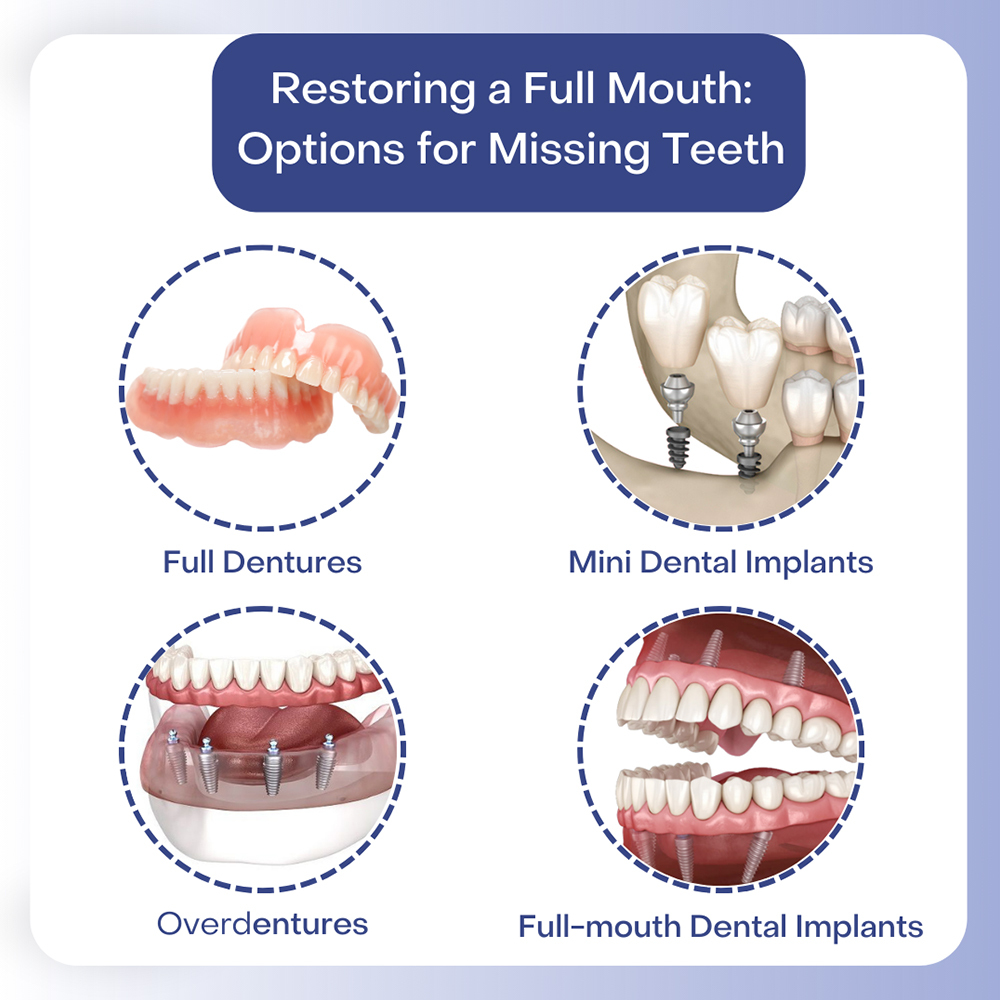Dental Sense Can Be Fun For Anyone
Dental Sense Can Be Fun For Anyone
Blog Article
The 5-Minute Rule for Dental Sense
Table of ContentsThe Best Strategy To Use For Dental SenseDental Sense for Beginners9 Simple Techniques For Dental SenseWhat Does Dental Sense Mean?
are clinical gadgets operatively implanted into the jaw to restore an individual's capability to chew or their appearance. They give assistance for fabricated (phony) teeth, such as crowns, bridges, or dentures. When a tooth is lost as a result of injury or illness, a person can experience issues such as fast bone loss, malfunctioning speech, or modifications to chewing patterns that result in discomfort.Dental dental implant systems contain a dental implant body and dental implant abutment and might also consist of an abutment fixation screw. Front tooth filling. The oral implant body is operatively inserted in the jawbone in area of the tooth's origin. The dental implant joint is usually affixed to the implant body by the joint fixation screw and expands via periodontals right into the mouth to sustain the attached artificial teeth
(https://pxhere.com/en/photographer-me/4492670)Framework of The Oral Implant System choosing oral implants, talk with your dental service provider regarding the potential advantages and risks, and whether you are a prospect for the procedure. Things to consider: Your general health is a vital consider figuring out whether you are a great candidate for dental implants, the length of time it will certainly take to recover, and for how long the implant might remain in location.
Smoking cigarettes may affect the recovery procedure and reduce the lasting success of the dental implant. The healing process for the dental implant body may take numerous months or longer, throughout which time you normally have a short-term joint in area of the tooth. the dental implant procedure: Meticulously adhere to the dental hygiene directions offered to you by your dental supplier.
Dental Sense - Questions
Implant failing can cause the need for an additional operation to deal with or change the dental implant system. Brings back the ability to eat Restores aesthetic appearance Helps maintain the jawbone from shrinking due to bone loss Preserves the health of the surrounding bone and periodontals Helps keep surrounding (nearby) teeth secure Improves top quality of life Damage to surrounding natural teeth throughout dental implant placement Injury to the surrounding tissues during surgical treatment, such as sinus perforation Injury during surgery (for instance, crack of surrounding jawbone) Poor function, such as seeming like the teeth do not attack with each other generally An experience that the tooth hangs or twisting in position resulting from a joint screw loosening up Implant body failure (looseness of the dental implant body) as a result of systemic infection, which might be more probable in patients with unrestrained diabetes as a result of local infection in bone and gum tissues supporting the implant body as a result of postponed healing, which might be more probable in clients that smoke Problem cleaning up the periodontals around the implant, leading to bad oral health Unattended gum disease Post-surgical pins and needles due to nerve impingement or damages Constantly notify wellness care providers and imaging service technicians that you have dental implants before any kind of magnetic vibration imaging (MRI) or x-ray treatments.
FDA is not knowledgeable about any kind of unfavorable events reported for MRI or x-ray treatments with dental implants. Oral implants systems are generally constructed from products that follow global agreement standards of the International Company for Standardization (ISO) or ASTM International. These requirements have details of what makes a safe material.

An oral implant is a structure that changes a missing tooth. With screw-like tools, the cosmetic surgeon inserts an implant right into the jawbone, and it acts as an anchor for an artificial tooth, called a crown.
The Only Guide to Dental Sense
Some individuals are not qualified for oral implant surgery. It is for oral specialists to operate individuals with: severe illnessuncontrollable metabolic diseasebone or soft cells illness or infectionIf read the article these problems are resolved, an individual can have the surgical procedure. In, dental doctors avoid from operating individuals with: If individuals with any one of the above go through oral implant surgical procedure, there is a greater danger of the dental implant falling short.

Oral implant surgical procedure is a tailored process. It's not the exact same for every person. The complying with gives a basic overview of what you can anticipate your dental expert, dental specialist, periodontist or prosthodontist to do: Position the implant operatively. Offer you time to heal. Connect the article and final crown, bridge or denture.
Next, your cosmetic surgeon will meticulously position the oral implant right into your jaw. Your doctor will certainly rearrange your periodontals and shut the laceration with stitches. If your dental implant is near the front of your mouth, your dentist will certainly make a temporary tooth for you to wear up until you heal. This way, you will not have a space in your smile while you recuperate.
Rumored Buzz on Dental Sense
Your copyright can inform you what to anticipate in your situation. Throughout the recovery phase, your jawbone ought to fuse to the oral implant. This procedure, called osseointegration, is essential for stability and long-lasting success. This procedure can take anywhere from three to 9 months. In some instances, it may take much longer.
Once your dental implant heals, your dental practitioner can attach the joint (tiny port post) and your last remediation (crown, bridge or denture). This generally takes regarding one hour to finish and might require a 2nd small surgical treatment. You should not really feel any discomfort throughout your oral implant procedure since your service provider will make use of medication to numb your periodontals.
Report this page